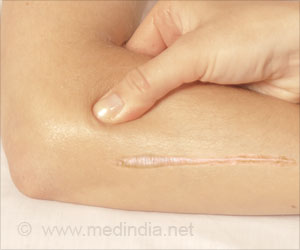A new study has debunked the scientific thought that the medium through which a sound wave travels inside the ear and returns backward is the same.
A new study has debunked the scientific thought that the medium through which a sound wave travels inside the ear and returns backward is the same.
‘Otoacoustic emission’ is the scientific term used for the soft sounds that the ear emanates in response to the sound that travels in.Researchers at the University of Michigan and Oregon Health and Science University say that their findings give new insight into a process by which enables doctors to test hearing in newborns or hearing loss.
“The former wisdom on how otoacoustic emissions left the ear was that there was a backward-travelling wave going along the structure of the cochlea in the same way as the forward-travelling sound wave. These measurements show that is not the case,” said Karl Grosh, a professor in the U-M departments of Mechanical Engineering and Biomedical Engineering.
The study report states that experiments performed by Oregon Health and Science University’s Associate Professor Tianying Ren showed that the sound waves coming out travel through the fluid of the inner ear, rather than rippling along the basilar membrane of the cochlea.
The basilar membrane cuts the inner channel of the cochlea diametrically in half into two chambers, both of which are filled with liquid.
According to the researchers, sound waves going into the ear undulate along the basilar membrane through the cochlea and eventually excite the organ of Corti, which senses and sends the sound signals to the brain through the auditory nerve.
Advertisement
During the study, the researchers used laser interferometers that detect waves to measure vibrations of the basilar membrane in response to sound at two locations in the cochlea of gerbils.
Advertisement
“Our new method can detect vibrations of less than a picometer, 1,000 times smaller than the diameter of an atom. The new data demonstrate that there is no detectable backward-traveling wave at physiological sound levels across a wide frequency range,” said Ren, principal investigator of this project.
“This knowledge will change scientists’ fundamental thinking on how waves propagate inside the cochlea, or how the cochlea processes sounds,” Ren added.
Source-ANI
SRM/L





